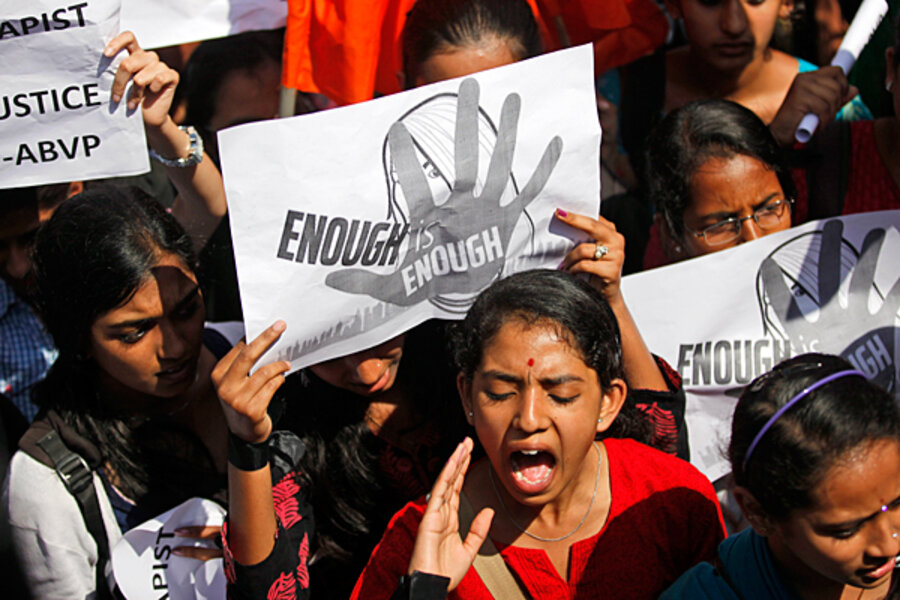India anti-rape protesters: Don't just get angry, do something
Loading...
| Mumbai, India
Among the many anti-rape protests that have been held in Indian cities over the past few weeks, something has stood out at a demonstration this week: Protest signs that didn’t cry shame or call for the death penalty, but pledged personal action.
“I pledge to intervene when I see a woman being harassed,” read one slogan on signs held by both men and women on New Year's Day. Another sign held by a young woman read, “I pledge to stare back.”
The “Safe City Pledge” demonstrations were organized by a collective called Blank Noise, which has been talking about sexual harassment in India for almost a decade now.
It is that long experience, says founder Jasmeen Patheja, that accounts for their unusual slogans. Amid the calls for better policing to prevent violent crime against women, the group wanted to also highlight how everyone contributes to – and can thus help change – a culture of sexism.
“It’s easy to blame the government and the police, but they also represent certain social mindsets, attitudes that we may be perpetuating,” Ms. Patheja says.
In recent weeks, some of those attitudes have been on display as political and civic leaders have faulted Westernization (read: sexual permissiveness) for violence against women.
On Friday, a leader from a Hindu nationalist party said that rapes “happen in India, not Bharat” (the Hindi name for the country), while another suggested that women are being punished for “crossing the line.” A survey from earlier this year showed that a fair chunk of both Indian men and women believed that wife beating was acceptable.
A younger, urban generation isn’t necessarily free from these attitudes either. “We may all contribute to the problem in invisible ways,” Patheja says. “When we say ‘Boys will be boys,’ or when we share sexist jokes or make mothers and sisters part of [curse words].”
One of the most common problems that Indian women face is harassment in public spaces.
“Eve teasing,” the lighthearted term used for everything from lewd comments to groping to stalking, is so routine that when Patheja started Blank Noise as part of a virtual project at Srishti School of Art, Design and Technology in Bangalore in 2003, she found few of her peers wanted to talk about it.
“There was a sense that it was just part of life, that there was nothing you could do about it,” she says.
Patheja and others started a blog to provide an anonymous space for women to share their experiences. They also began organizing public events. The idea was not to be an advocacy group, says Patheja, but to “trigger a public dialogue that wasn’t didactic, through a series of approaches both blog-based and on-the-ground interventions.” Blank Noise also encouraged young women to confront street harassment in an effort to “reclaim the city.”
That approach challenges the conventional idea that women should protect themselves by staying away from the public sphere, and a recent trend among the Indian middle-class to segregate themselves from chaotic urban environments through gated communities and private transport. Signs at Tuesday’s demonstration included pledges to “use public transport even when private transport was available.”
Today, the Blank Noise project has a presence across nine cities, hundreds of volunteers and a large Facebook presence, though getting boots on the ground remains a challenge. More than 10,000 people were invited via Facebook to take part in Tuesday’s protest across the country.
In Mumbai, about 30 showed up. “It’s easier to click ‘like’ and more difficult to get out on the street,” says Patheja. “But we don’t worry much about that anymore. Even that one click means that someone has decided to engage.”
What is most important, she suggests, is the change she has seen in the past decade. Last month, the supreme court called for wide-ranging measures to curb harassment in public places. “There is now a greater willingness to talk about the issue,” she says, “and less of an inclination to trivialize it.”







